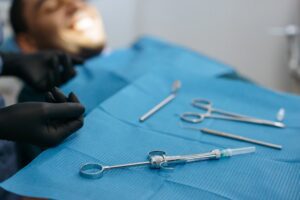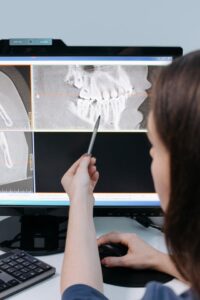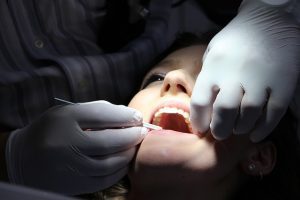Are our teeth and gums better than those of people who lived 5000 years ago? Believe it or not, the answer to this question is not an unequivocal “Yes, of course”; it’s actually more like “Well, in some ways, yes, and in other ways, no”. There’s a lot that goes on with regards to oral health and proper dental care: tooth rot, gum disease, caries, missing teeth, infection. And if we’re all being honest, even with all the modern technology we have for tooth replacement and oral/maxillofacial procedures to restore smiles today, as a society, we’re still not doing that great at taking care of our teeth.
In analyzing the mouth health of the US population, the CDC has it covered. But who can tell us prevalence and types of oral afflictions that affected, say, people who lived in Old Kingdom Egypt (4600 years ago)? Or even farther back – the Neolithic Revolution (12000 years ago?
The answer is dental anthropologists, which work in a subfield of forensic anthropology; a field dedicated to reconstructing a picture of past people’s daily lives, their health, their illnesses, etc. by analyzing ancient human remains. Because teeth are basically bone with a protective coating (read: enamel), they preserve really well, and there’s a lot of information to be gathered even from half the upper jaw of a Paleolithic man from 30000 years ago.
So, who… or has anyone… mastered the art of taking care of their teeth? Let’s take a look at us vs them: who had better oral health?
Modern Day Mouth Heath vs Millennia Past: Who Did it Better?
Let’s start with the US population today. We’ll use it as a baseline and then compare it to archaeological studies and their findings on ancient populations.
- More than 25% of adults in the US have untreated tooth decay.
- Nearly half (46%) of adults 30+ years old show signs of gum disease
- Severe gum disease affects about 9% of adults.
- Over 13% of children in the US have untreated caries.
- Of adults 20-44, over 25% have untreated caries.
It’s important to note, with all of these statistics, is the huge disparities between populations with low socioeconomic status (read: low-income) vs people in higher SES brackets, who tend to have (and use) their dental insurance to protect and restore their oral health.
Examples of Oral Pathologies in Ancient Populations Across the World
This is where things get interesting. From Egypt to Britain to the Atacama Desert, forensic dental anthropologists have a pretty good idea of oral health issues and prevalence across many ancient populations:
- Dental caries show up in some of the earliest human ancestors in East and South Africa, such as the Australopithecines (1.5 million years ago), and followed us throughout evolution and all the way to modern day.
- An analysis of a skull deemed Rhodesian Man, another early human predecessor from Central Africa (300000 years ago), had a pretty nasty mouth. Of the 13 teeth available for analysis, 11 had caries, there were 15 cavities, 2 teeth were broken, and there was evidence of like, a lot of abscesses and lesions.
- A significant prevalence of caries, tooth decay, gum disease, severe tooth wear and abscessed have been identified in Neanderthal finds all over Western Europe.
- A study of remains from a Moroccan cave used from 13000-11000 years ago showed that, out of 52 individuals, 94% had cavities that affected more than half of surviving teeth.
- An analysis of well-preserved human remains from a South American people (11000 years ago) showed some pretty severe rates of oral pathologies: over 89% of the 83 skeletal remains observed had average tooth loss of 9, and over 46% presented dental caries and lesions. 58% showed severe tooth decay that resulted in attrition, and over a quarter showed evidence of significant (44%) jaw deterioration.
- A study of preserved Egyptian human remains (5000-2000 years ago) had lower rates of caries than modern people, but presented tooth wear so severe that the tooth pulp was exposed.
- An examination of 300 Romano-British skulls (2000-1600 years ago) showed very low rates of severe gum disease compared to modern populations: 5% of the skulls vs 15-50% in modern populations.
- In subjects from Roman Herculaneum, which was preserved for eternity after being covered by the lava flow from Vesuvius, middle and upper class subjects, who unknowingly ate fruit that had antibiotic properties, showed very low rates of all kinds of oral pathologies, tooth decay and gum disease.
We could go on, but this should give you a decent picture of how oral health in humans and their bipedal ancestors has changed over time. And not in a linear way – modern oral health is by no means universally better than those of the ancients.
Evidence of Oral Surgeries in Ancient Cultures
So how did our ancestors deal with afflictions of the mouth? We already know Romans accidentally ate antibiotics throughout their life. Tooth health was a great side effect of that, but it wasn’t a way to correct existing pathologies, it served to prevent them. A few examples of ancient cultures that practiced oral surgeries are:
- A 14000 year old skeleton from Italy with caries in their teeth showed evidence that the infected part of the tooth had been slowly chipped away with dental tools.
- The first evidence of drilling teeth with cavities comes from remains that are 9000-7000 years ago.
- Canine teeth from 13000 year old human remains showed evidence of the inner tooth being scraped away and then stuffed with bitumen – a natural tar sealant used in many ancient cultures. Sounds like a pretty brutal oral surgery, but it seemed to be effective.
- Tooth replacement in ancient Egypt was basically the earliest type of dental bridge: donor teeth (read: teeth from slaves) were wired together into a bridge and then wired to an anchor tooth on either side.
- Another culture who had common practice for tooth replacement was the Mayans, who replaced missing teeth with shells.
- 4000 year old remains from China show what’s currently known as the first dental surgery. An infected or decayed tooth (it’s impossible to know because it’s gone) was extracted, and then a bamboo peg was installed in the empty socket.
The Eternal & Universal Need to Protect our Teeth
While “modern” dentistry wasn’t a field until the 17th century, there’s plenty of evidence across the world to show that humans, and even pre-humans, practiced holistic restorative methods of repairing or replacing teeth. Today, when a patient visits us to restore their smile with dentures, implants, veneers and the like, their goal is a whole, healthy and attractive smile. And the ancients were no different. These early methods of invasive dentistry show that keeping teeth in their mouths was more important than removing tooth and gum diseases.
The Greeks were so focused on the importance of keeping their smiles whole that they’d pack mustard into infected teeth. Many people died unnecessarily from tooth maladies that were allowed to proliferate, just because they didn’t want a tooth pulled and replaced. This is a bit extreme, but it shows that people’s smiles have always been important to them. It seems we and our 1 million year old counterparts aren’t nearly as different as we thought.










